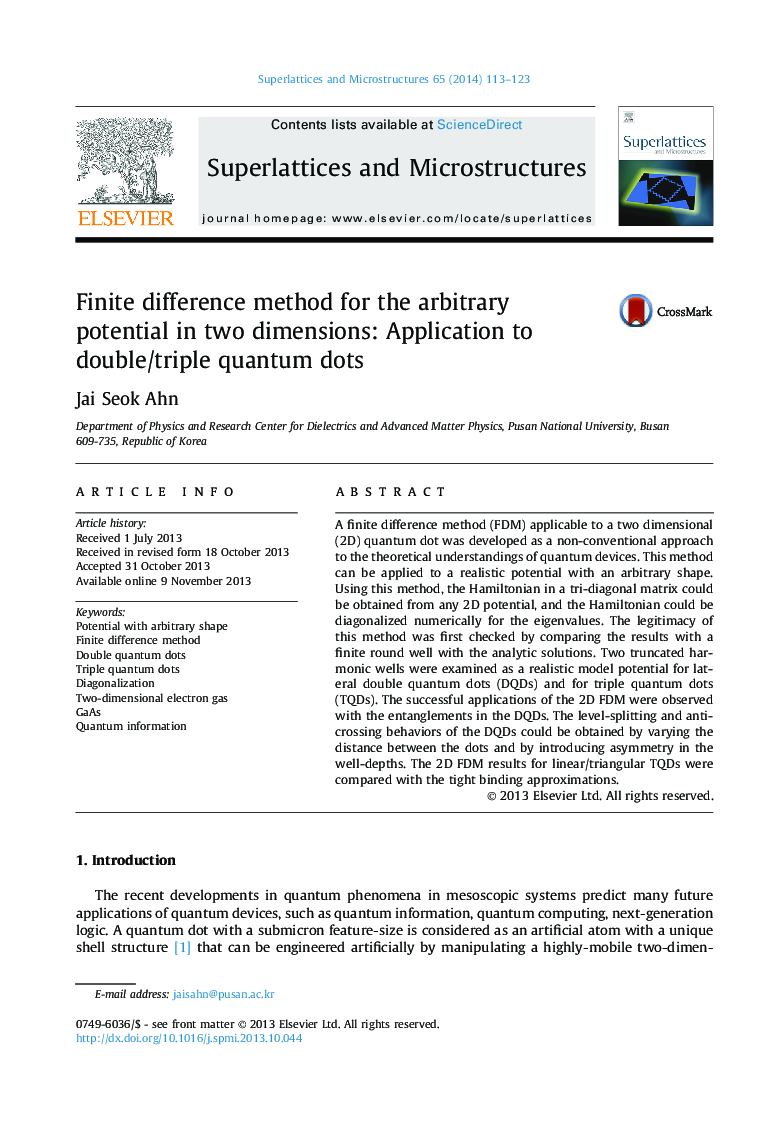| کد مقاله | کد نشریه | سال انتشار | مقاله انگلیسی | نسخه تمام متن |
|---|---|---|---|---|
| 7942760 | 1513236 | 2014 | 11 صفحه PDF | دانلود رایگان |
عنوان انگلیسی مقاله ISI
Finite difference method for the arbitrary potential in two dimensions: Application to double/triple quantum dots
ترجمه فارسی عنوان
روش تقسیم محدود برای پتانسیل دلخواه در دو بعد: کاربرد به نقاط کوانتومی دوتایی / سه گانه
دانلود مقاله + سفارش ترجمه
دانلود مقاله ISI انگلیسی
رایگان برای ایرانیان
کلمات کلیدی
موضوعات مرتبط
مهندسی و علوم پایه
مهندسی مواد
مواد الکترونیکی، نوری و مغناطیسی
چکیده انگلیسی
A finite difference method (FDM) applicable to a two dimensional (2D) quantum dot was developed as a non-conventional approach to the theoretical understandings of quantum devices. This method can be applied to a realistic potential with an arbitrary shape. Using this method, the Hamiltonian in a tri-diagonal matrix could be obtained from any 2D potential, and the Hamiltonian could be diagonalized numerically for the eigenvalues. The legitimacy of this method was first checked by comparing the results with a finite round well with the analytic solutions. Two truncated harmonic wells were examined as a realistic model potential for lateral double quantum dots (DQDs) and for triple quantum dots (TQDs). The successful applications of the 2D FDM were observed with the entanglements in the DQDs. The level-splitting and anticrossing behaviors of the DQDs could be obtained by varying the distance between the dots and by introducing asymmetry in the well-depths. The 2D FDM results for linear/triangular TQDs were compared with the tight binding approximations.
ناشر
Database: Elsevier - ScienceDirect (ساینس دایرکت)
Journal: Superlattices and Microstructures - Volume 65, January 2014, Pages 113-123
Journal: Superlattices and Microstructures - Volume 65, January 2014, Pages 113-123
نویسندگان
Jai Seok Ahn,
